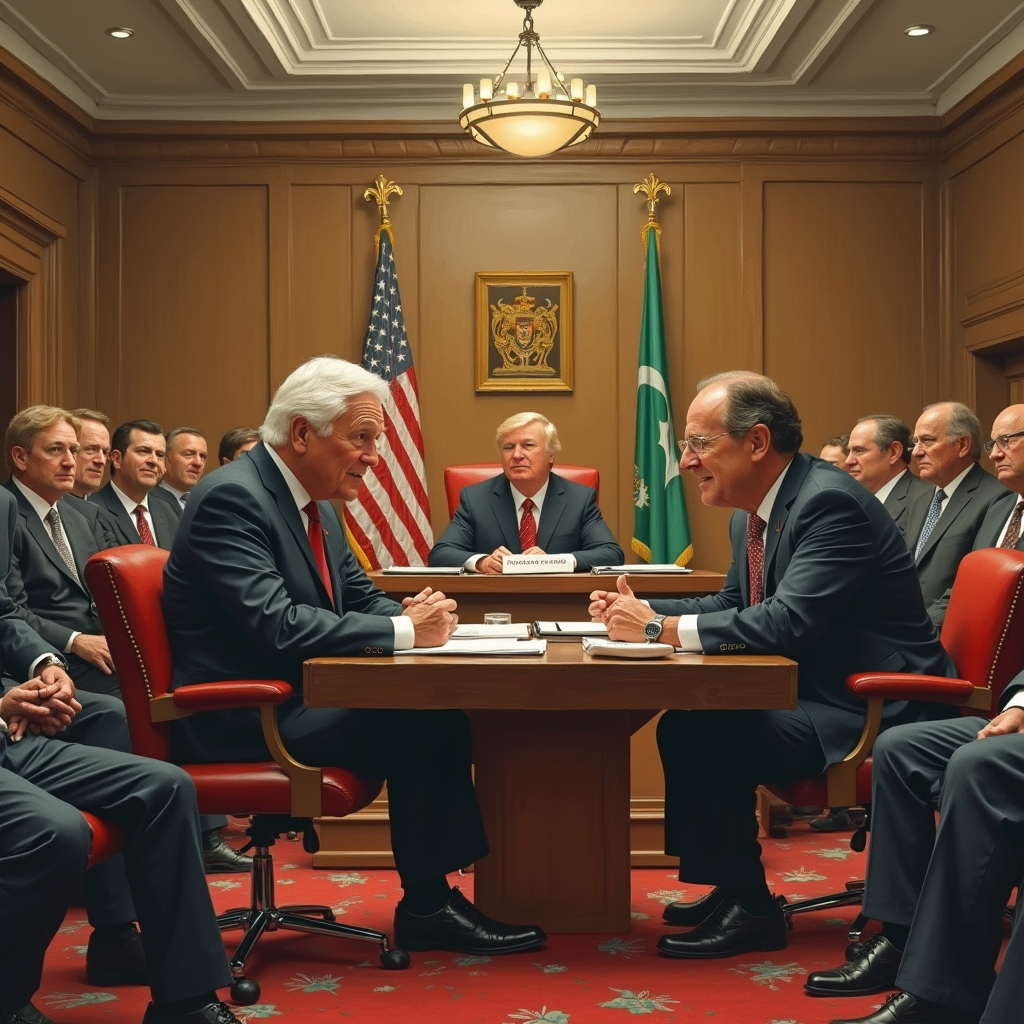This article is written by Shenbaga Seeralan S. This article provides a broader perspective of Section 42 of the Trade Marks Act, 1999. This article collectively explains the conditional clause and the corresponding procedure associated with the provision along with the accompanying legal and factual application.
Table of Contents
Introduction
A trademark is a distinguishing factor that adds to the uniqueness of the goods or services of one company from another. It is one of the categories of Intellectual Property. The concept of trademark was not an invention of the industrial age. In prehistoric times, the clans used to brand their cattle with a distinguishing mark to ascertain their ownership. The artists of Rome and Egypt brand their marks in the sculptures that they have crafted to validate the originality, which in turn determines the value. During the period of silk trade, the Chinese used to imprint their goods with a mark that would stand as the symbol of quality. The European noble families used a mark called a ‘house mark’, which stood as a symbol of pride and identification.
In modern day, the trademark is being recognised as an asset of the person owning it, which brings in the concept of transferring it to someone else. The trademark is transferred or assigned to another legal entity for financial returns or as a part of the larger memorandum. The assignment of trademark may be categorised into various types based on the material of assignment and the conditions of assignment. The assignment involves various parameters including consideration, goodwill and the nature of assignment. The Act that governs trademark registration and disputes in India is the Trade Marks Act, 1999 (hereinafter referred to as the Act) which was formulated on the principles of TRIPS agreement. This article enunciates the concept of assignment of trademark other than the goodwill of the business.
Details of the Section
- Act involved : The Trade Marks Act, 1999
- Section: Section 42 of the Act
- Chapter : Chapter V : Assignment and Transmission
Terminologies associated with Section 42 of the Act
Section 42 of the Act deals with the conditions of assignment of the trademarks, provided that the assignment is not related to the goodwill of the business. Before delving into the details of the provision, it is imperative to introduce the terminologies associated with Section 42 of the Act.
What is assignment of trademark
The sub-section (1) clause (b) of Section 2 of the Act defines assignment as the process of assigning the trademark in writing, undertaken by the parties concerned. It is a legal mechanism by which the ownership rights of a registered trademark are transferred from one party to another. This transfer involves the transfer of intellectual property including the symbol and other combined elements. The key elements of an assignment are as follows:
- Assignor: a person who hands over the rights
- Assignee: a person who acquires the rights
- Assignment agreement: a legal document defining the rights and liabilities, with the terms of consideration.
What is goodwill of the business
The goodwill of the business is a reputation that a business carries which increases its market value. The concept of goodwill is recognised in the case of Commissioner of Income Tax, Bangalore vs. B.C. Srinivasa Setty (1981). The goodwill of the company is linked to the relationships it has built and the opportunities it has nurtured. The goodwill is possessed by the company and is prevalent over a period of time. Thus, the new start-ups do not have the privilege of goodwill. The goodwill is considered as an intangible asset of a company. It also attracts additional payment during the process of assignment or transmission. The types of goodwill that are associated with the trademark of the company may include the following
- Identity of the brand
- Compatible customer relations
- Technological reach
- Social media influence
- Proprietary know-how
Though it is not an easy task to quantify the goodwill that a company has acquired, for the purposes of accounting, goodwill is calculated by a formula.
Goodwill = Purchase price – (Fair Market Value of Assets – Fair Market Value of Liabilities)
The sale of goodwill is also facilitated through Section 55 of the Partnership Act, 1932. The provision of the above Section enables the sale of goodwill after the dissolution of a company. It also mandates that the goodwill of the company is considered as an asset, which comes along with rights and liabilities.

Differences between transmission and assignment
| S.No | Transmission | Assignment |
| 1 | Section 2(zc) defines transmission as transmitting a trademark by the means of operation of law, provided that the trademark is not assigned already. | Section 2(b) defines assignment as assigning trademarks by a legal act of parties, which involves transfer of ownership. |
| 2 | Restricted rights and liabilities are granted to the party receiving the rights. | The rights and liabilities devolved may be full or partial depending upon the assignment agreement. |
| 3 | The rights may be transferred with or without the goodwill of the business. | The rights may be transferred with or without the goodwill of the business. |
| 4 | The transmission of a trademark need not be necessarily registered. | The validity of the assignment is guaranteed by registration. |
| 5 | Illustration: A shoe manufacturer transfers a trademark on font to another party, thereby granting them rights to use the trademark without compromising the ownership. | Illustration: A shoe manufacturer assigns a trademark on font to another party. This grants the assignee the full ownership of the font. |
Conditions mentioned in Section 42 of Trade Marks Act, 1999
This is a restricting Section which provides conditions for the assignment of a trademark otherwise than in connection with the goodwill of a business. The conditions include as follows:
- The assignee must publish an advertisement of the assignment, in the form and manner as prescribed.
- The assignee must apply to the Registrar along with the advertisement, requesting direction regarding the assignment.
- The assignee is provided with a time period of six months from the date of assignment to make such an application.
- The assignee can ask for an extension of time to the Registrar.
- The maximum extension that can be provided should not exceed three months in aggregate.
- The advertisement should be made in accordance with the rules prescribed by the Registrar.
This provision is applicable to both registered and unregistered trademarks. However, these conditions are not applicable to the assignment of trademarks involving the goodwill of the business. Apart from the assignment involving the goodwill of the business, the section also restricts a few other assignments. Those include
- Assignment of trademark of goods or services along with the transfer of goodwill connected to the goods or services.
- Assignment of trademark in relation to the goods exported from India, along with the goodwill of export business.
- Assignment of trademark in relation to the services used outside India, along with the goodwill of export business.
Types of assignment of the trademark
The Trademarks Act, 1999, under Section 37 enables the assignment of trademark. This Section enables the person registered as the proprietor in the registry the right to assign the trademark and to give receipts of consideration received for such assignment. The assignment of a trademark gives the assignee both rights and liabilities in connection with the trademark. The assignment of trademarks is possible for both registered and unregistered trademarks. Various heads of assignment include
Complete assignment
The type of assignment in which the assignee becomes the new owner of the trademark, acquiring all the rights and liabilities. The assignor ceases to have any control over the assigned trademarks.
Partial assignment
In this type of assignment the rights and liabilities over the trademark is partially transferred to the assignee. For example, when a group of products have a tagline which is registered for the trademark. The assignor assigns the trademark for one particular product to the assignee and continues to use the tagline for other products withholding the right and liabilities to use the trademark for other products and services.
Assignment concerning goodwill
The assignment of registered trademarks with or without the goodwill of the business is facilitated by Section 38 of the Act. The assignment of unregistered trademarks with or without the goodwill of the business is facilitated by Section 39 of the Act.
Assignment without goodwill of the business
In the case of the assignment of registered or unregistered trademarks without the goodwill of the business, the assignor assigns the rights and ownership of the goods and services to the assignee, which he is not using under the trademark. For example, let us consider a detergent company ‘A’ has the trademark for the tag ‘super clean’ associated with its washing powder. Now, the detergent company ‘A’ assigns the trademark to another company ‘B’ without the goodwill of the business. This means that company ‘B’ can use the acquired trademark for all goods and services except washing powder. The company ‘A’ has assigned only the rights and ownership of the tagline but not the goodwill associated with the tagline. Therefore, company ‘B’ has to create its own goodwill for the acquired trademark.
The assignment of a trademark without the goodwill of the business has major implications both on the assignee and the assignor. The assignment of a trademark is carried out to provide financial prospects to either parties. The assignee gets the right to use a trademarked property, that will boost the prowess of his/her business, whereas the assignor gets the consideration as per the assignment agreement for handing over his registered or unregistered trademark.

Assignment with goodwill of the business
In this type of assignment the assignee gets the goodwill associated with the product along with the rights and liabilities of the assigned trademark. The assignee has the right to use the reputation of the trademark to build his/her product line and for marketing.
It is not necessary that these types of assignments be made within the same business niche. It is worth noting that an assignment without the goodwill of the business is opted for relevance rather than productivity. This type of assignment, apart from the right of ownership, also carries along the entitlements attached to the goods and services associated with the business.
Difference between assignment with goodwill and without goodwill
| S.No | Assignment with goodwill | Assignment without goodwill |
| 1 | Assignment of trademark along with the goodwill associated with it. The goodwill includes the public opinion, customer base, reliability of the product or service etc., | Assignment of trademark with the right to use only the phrase or the logo without the reliability and public opinion associated with it. |
| 2 | Advertisement becomes mandatory in case of assignment with goodwill. | Advertisement becomes optional in case of assignment without goodwill. |
| 3 | Registration becomes mandatory for assignment of trademarks with goodwill. | Registration becomes mandatory for assignment of trademarks with goodwill. |
| 4 | The assignor has no rights over the trademark after assignment due to the complete loss of ownership. | The assignor still has the ownership of the goodwill associated with the trademark. |
| 5 | Assignment agreement becomes mandatory, which acts as a legal proof. | Assignment agreement becomes mandatory, which acts as a legal proof. |
Application for assignment without goodwill
The process of application for assignment involves filling of Form TM-P/TM-M. The form TM-P is trademark form post registration which is used for applying for assignment of registered trademark. The form TM-M is a miscellaneous trademark form which is used for applying for assignment of unregistered trademark. The details of assignment are to be filed in the Part-B of the form which encompasses the purpose of request. The sub-categories i, j and k in Part-B of the form is used to address the provision of Section 42 of the Act.
| S.No | Sub-category of Part-B of TM-P form | Contents | Requirements |
| 1 | i | The sub-category ‘i’ deals with the application under Section 42 for direction of the Registrar for advertisement of assignment without goodwill of a trademark. | The details of the request form along with the statement of the case and copy of the assignment or transmission should be attached. |
| 2 | j | The sub-category ‘j’ deals with the application for the consent of the Registrar to the assignment or transmission of certification trademark. | The documents including draft deed of the proposed assignment, the statement of the case and the affidavit of the parties should be attached. |
| 3 | k | The sub-category ‘k’ deals with the application for extension of time under Section 42 for direction of the Registrar for advertisement of assignment without goodwill of a trademark. | Duration of extension of time along with the reason for extension should be attached. The date of acquisition or devolution should be clearly mentioned. |
It is mandatory that only one request can be made using one form. In the case of making multiple requests using one form, the first request is considered as valid and the rest of the requests will be ignored. After filling the required information in the form, a statutory fee of 1,000 rupees is collected for offline filing and 900 rupees for online filing. This statutory fee is for the assignment of unregistered trademarks. Whereas, for registered trademarks, the statutory fee for offline submission is 10,000 rupees and for online submission is 9,000 rupees.
Before filing the form, the assignor needs the direction from the Registrar for advertisement of assignment without the goodwill of the business under Rule 80 of the Trademark Rules, 2017. This assignor has to pay a statutory fee of 3,000 rupees for offline filing or 2,700 rupees for online filing within a period of six months from making the assignment or within the prescribed extended period of three months to the Registrar to obtain direction for the advertisement of assignment without the goodwill of the business. After advertisement based on the requirement, the form TM-P or TM-M is filed.

The entry of assignment is approved through Rule 81 of the Trademark Rules, 2017. The rule states that the application for entry of assignment made under Rule 75 of the Rules, 201 with respect to any goods or services shall be demarcated into two types. The first category administers the trademark on the goods and services that are used in the past or presently in use in the business. The second category deals with the assignment of a trademark otherwise than in connection with the goodwill of the business. If the Registrar is satisfied with the application made under Rule 80 of the Trademark Rules, 2017 and on inclusion of copies of the advertisement, he shall give directions of assignment. If he finds any discrepancies, then he shall not proceed with the application.
Procedure for registration of assignment of trademark without goodwill
The procedure for assignment of trademark is comprehensive and is detailed in the Act and in the Rules, 2017. Under sub-section (1) of Section 45 of the Act, the assignee of the trademark who holds the entitlements of a trademark is mandated to apply to the Registrar of Trademarks for registration of assignment. On the receipt of such an application, the Registrar checks if the application was made in the prescribed manner and assigns the assignee as the proprietor of the trademark. The Registrar also has the responsibility to make the entries of such assignments in the register.
The sub-section (2) of Section 45 of the Act enables the Registrar to ask the assignee to furnish the documents related to the validity of assignment and proof of title when there is a reasonable doubt in the accuracy of the statement made by the assignee. The Registrar may refuse to register the assignment in case of dispute between parties until the dispute is resolved by a competent court under sub-section (3) of Section 45 of the Act. The assignment remains ineffective to a person with a conflicting interest over a trademark until an application under Section 45 is filed.
After an application for assignment is made under Rule 75 of the Rules, 2017 by filing form TM-P along with the original documents, the Registrar is mandated to dispose of the application within a period of three months from the date of application under Rule 76 of the Rules, 2017. The Registrar can ask for proof of title in case of any doubts under Rule 77 of the Rules, 2017. The Registrar is entitled to impound the document under Section 33 of the Indian Stamps Act, 1899 if he finds the document of assignment insufficiently stamped.
It is also mandatory to make a few entries in the registry according to Rule 84 of the Rules, 2017. The entries that are to be made are as follows:
- names of the parties involved
- their respective addresses
- date of assignment
- description of the rights transferred
- whether goodwill associated with the business is transferred or not
- consent of the parties and consideration involved
- basis of assignment
- date of registration
After making these entries in the registry, the Registrar should give the assent after verifying the genuinity.
Documents required for the registration of assignment without goodwill
- Form TM-P with signatures of the parties.
- Photocopy of the logo or phrase, which is going to be assigned. The assignable trademark can be presented in the colour or black and white in case of logo.
- Proof of identity of the assignor and the assignee.
- Proof of address of the assignor and the assignee.
- Description of the trademark to be assigned should be attached to the Form TM-P.
- Copy of advertisement along with the Register’s direction.
- Proof of date of execution of the assignment agreement along with the witness.
Judicial interpretation of Section 42 of Trade Marks Act, 1999
The disputes related to assignment of trademarks have been adjudicated in various cases by appropriate courts. It is necessary to comprehend a few of those cases and their respective judgements to understand the concept of assignment in detail.
Paul Brothers and Another vs. Union of India and Others (2023)
In this case, the High Court of Calcutta adjudicates an appeal on a case related to the ownership of assigned trademarks.
Facts
The petitioner was in the business of manufacture and sale of pharmaceutical products. The respondent no. 3 was the proprietor of Duckbill Drugs Private Limited, which went into liquidation by an order of the National Company Law Tribunal (NCLT) on 13th April, 2021. The properties of the company including 14 trademarks went through the public auction conducted under the provisions of the Insolvency and Bankruptcy Code, 2016. These trademarks were related to the medicinal products and were the subject matter of e-auction sale notice published on 23rd April, 2022. The petitioner became successful in bidding and purchased the holding of the said company along with the ownership of the 14 trademarks. The petitioner later came to know that out of 14 trademarks 7 were registered in the name of respondent no. 6 by the means of an assignment deed dated 3rd April, 2017 for a sum of 7,000 rupees.

The respondent no: 4 and 5 are the directors of the liquidated company and respondent no: 6 is the daughter-in-law of respondent no: 4. The official liquidator was the respondent no: 7. The respondent no: 6, who is the assignee of the 7 out of 14 trademarks, filed a title suit in the Alipore Court on November, 2022. The respondent no: 6 claimed for a declaration decree ascertaining the proprietorship of the trademarks and a permanent injunction restraining respondent no: 3 from embezzlement of the intellectual property. Though the order was not granted in Alipore Court, the Division Bench of Calcutta High Court restrained respondent no: 3 from using the concerned trademarks until 31st March, 2023, which was further extended till 6th April, 2023.
Issues
- Whether the ownership of trademarks belongs to the owner through auction sale or decree holder?
- Validity of trademarks without goodwill in the absence of registration
Arguments
This petition came before Justice Moushumi Bhattacharya in Calcutta High Court. The learned counsel appearing for the respondent no: 6 raised the objection of maintainability of writ petition. The counsel claimed that the petitioner in spite of having a statutory recourse under Section 91 of the Act for appealing to the Appellate Board the petitioner resorted to filing this petition. Also, under Section 57(2) of the Act any person aggrieved by any entry made in the register without sufficient cause may apply to the High Court or the Registrar of trademarks for expunging the entry. The counsel also noted that the petitioner did not make an attempt to register the disputed trademarks which he had acquired through an auction sale. It was also mentioned that under Section 42 of the Act, it is mandated that the registration should be made within 9 months of the assignment. The counsel of the petitioner argued that the writ petition was filed on 14th November, 2022, whereas the respondent no: 6 instituted the title suit in Alipore Court on December, 2022, which further led to appeal in division bench in January, 2023. This proved that the respondent no: 6 rushed to file writ after the action of the petitioner.
Judgement
The Calcutta High Court held that a person who is a bona fide purchaser of the property at an auction sale has the higher privilege than the decree holder. Therefore, the petitioner has the right over the 7 trademarks assigned to the respondent no: 6. The court also took note of the fact that Section 42 of the Act mandates that the assignment has to be registered by applying to the Registrar by attaching an advertisement within a maximum of nine months, including the extension period. Any assignment that is not registered within nine months does not take effect. Therefore, in the view of the court, the facts presented without any doubt proved the ownership of respondent no: 6 over 7 trademarks listed by the petitioner.
M/S. Nico Quality Products Rep. by its partner vs. M/S N.C. Arya Snuff and Cigar and Co and Others (2013)
In this case, the Madras High Court deals with the applicability of Section 42 of the Act and the allied registration issues of trademark.
Facts

The applicant/plaintiff was a partnership firm involved in the business of supply and marketing of snuff and cigar products in India and abroad. The respondents were also belonging to partnership concerns involved in the same line of business. The respondent no: 1 transferred the trademarks belonging to her concern to the plaintiff through assignment agreement dated 15th December, 2011. For this assignment a consideration of 75 lakh rupees was received. The assignee/plaintiff upon receiving the assignment started manufacturing and marketing of the cigar products from August, 2013. The plaintiff approached the Registrar of trademarks, Guindy, Chennai for registering the trademarks. It came to the knowledge of the plaintiff that the assignor was continuing to manufacture and sell the assigned products. The plaintiff applied for an interim injunction in the High Court of Madras to restrain the respondent from manufacturing and marketing products with the applicant’s trademarks. The court passed an order of interim injunction for a period of 8 weeks on 13th September, 2013.
Issues
- Whether non-registration of assigned trademarks incapacitates the assignee from taking legal action?
- Importance of advertisement of assignment of trademark without goodwill of the business.
Arguments
The respondents counsels ascertained that the assignment was made through forged documents without the consent of other shareholders . It was also contended that under Section 45 of the Act, any assignment of registered trademarks without the goodwill of the business will not take effect, until the assignment agreement is presented before the Registrar within nine months of signing (including the extension period) for the purpose of registration. It was also noted that Section 42 mandates the advertisement of the assignment agreement to make it effective.

By the means of a reply counter affidavit, the counsel appearing for the applicant contended that the respondent no: 1 had individual capacity to facilitate a deed of assignment. It was also brought to the notice of the court that the respondent no: 1 was given the power of making assignments through an authorisation letter from other partners and it was agreed by the parties that after the expiry of 18 months from the date of signing of the assignment agreement that the assignor should stop the usage of assigned trademarks. The counsel also asserted that non-registration of the assignment of the trademarks within a six months period would not affect the right of the assignee in using the assigned trademarks as contested by the respondent’s counsel.
Judgement
The Hon’ble Court took notice of the arguments of parties and laid down its observations before giving a direction. The court noted that the letter of authorisation by the partners might have been fabricated by the respondent no: 1 for the purpose of this case. The court also took cognizance that the assignment was not registered. Section 45 of the Act mandates the registration within 6 months from signing of the agreement, to prevent a third party from claiming the rights of the said trademarks. However, the court also mentioned that non-registration will not incapacitate the assignee from taking legal action against the assignor for violating the deed agreement.
The court also held that the object of Section 42 of the Act was to make the assignment of the trademarks other than the goodwill of the business known to the general public through an advertisement as the assignor continues his business in the same niche. This makes the condition for advertisement under Section 42 of the Act mandatory and makes it a predecessor to the registration under Section 45 of the Act. Finally, the court held that due to the lack of prima facie case both on law and facts in favour of the applicant, the interim injunction against respondents was vacated.
Cott Beverage Inc., A Georgia vs. Silvassa Bottling Company (2003)
In this case, the Bombay High Court adjudicated the dispute between two firms in the use of a trademark after assignment.
Facts
The appellants are the successors of Royal Crown Company, which was incorporated in the USA. The said company applied for registration of a trademark containing letters ‘RC’ in the year 1970, which was used for non-alcoholic beverages and extracts. The said company assigned certain trademarks in favour of the appellant on 19 July, 2001. The defendants have manufactured cola drinks under the mark ‘RC Cola’ since 1999. The plaintiffs/appellants were well aware about the products of the defendant company under the said trademark ‘RC Cola’. The plaintiff allowed the defendant company to continue, expand and consolidate the business under the trademark, however with an ulterior motive filed a suit on 29th April, 2003.
An ex-parte order of interim injunction against the defendants was issued by the District Court of Silvassa, Gujarat. The Trial Court later vacated the order of ex parte injunction. The appellants preferred an appeal from that order in the Bombay High Court. The case was adjudicated by the honourable Justice V.M. Kanade.
Issues
- Applicability of registration of assigned trademarks in case of a dispute between parties.
- Necessity of advertisement in assignment of trademark other than goodwill.
Arguments
The learned counsel appearing for the appellant opposed the comment of the Trial Court that the trademark ‘RC’ was very common in the country. It was also contested in favour of the appellant that no material facts were submitted to show that the appellant encouraged the conduct of the respondent and merely a delay cannot be considered as a defence for an act of infringement. It was also noted by the counsel that the deed of assignment made in favour of the appellant was not registered so its validity cannot be accepted. It was also added that under Section 42 of the Act assignment of trademark other than good will of the business needed an advertisement to make the public aware about such an assignment, with assent from the Registrar.
The counsel for respondent highlighted that there was an absence of assignment of goodwill by the said company in favour of the appellant. This entitles the said company of the respondents to use the brand of the trademark, which gathers public goodwill. This also makes sufficient cause for ensuring that the appellant cannot claim a passing off order due to lapse of time.
Judgement

The court in this case observed that the Trial Court had considered the fact that the registration of the assigned trademark is pending before the Registrar of trademarks, Bombay. In addition to that the ex parte order obtained by the appellants resulted in closure of the business of the defendants. The court was of the view that no prima facie case was made out by the plaintiff/appellant that the infringement of the trademark is caused by the action of the respondents. The court directed the Trial Court to expedite the proceedings and mandated it to not get influenced by any observations made by the High Court of Bombay. Thereby the court dismissed the appeal without any costs.
Commissioner of Income Tax, Bangalore vs. B.C. Srinivasa Setty, etc (1981)
In this case, the Supreme Court of India adjudicated the dispute related to tax structure involving quantification of goodwill of the business.
Facts
The respondent / assessee is the proprietor of the registered firm, which was involved in the business of manufacture and sale of agarbathis. A deed of partnership was executed on 28th July, 1954 which was extended through another deed on 31st March, 1964. It was explicitly mentioned in the deed that the goodwill of the firm was not valued to determine the assets during the partnership, however, it was mentioned that the valuation of goodwill will be conducted during the dissolution. The firm was dissolved on 31st December, 1965. The goodwill of the business was valued at 1,50,000 rupees at the time of dissolution.
The firm was taken over by another firm after the dissolution deed was executed. Since the old assessment did not include the goodwill of the business, the new Commissioner of the Income Tax using his revisional jurisdiction decided to set aside the old assessment and ordered for the fresh assessment including the goodwill of the business. When this direction of the commissioner was appealed in the Income Tax Appellate Tribunal, the Tribunal accepted the contention raised by the appellant that the sale does not attract any tax on capital gains which included the goodwill of the firm. The appeal then went on to the High Court of Karnataka for reference, where the court affirmed the opinion of the Tribunal that transfer of goodwill was not liable to capital gain tax under Section 45 of the Income Tax Act, 1961. Aggrieved by the order, the appellant approached the Supreme Court of India. The appeal came before the bench consisting of Justice R.S. Pathak, Justice P.N. Bhagawati and Justice V.D. Tulzapurkar.
Issues
- Whether the goodwill of the business can be quantified to bring it under capital asset?
- Effect of execution deed on the transfer of assignment without the goodwill of the business.
Judgement
The bench after hearing the arguments of the parties and analysing the legal aspects of the fixture, held that the goodwill of the newly commenced business cannot be brought under the purview of assets under Section 45 of the Income Tax Act, 1961. The court noted that the term goodwill of the business denoted the reputation and public value of the company. The goodwill varies between companies and among users based on the methods followed and the products delivered. The goodwill of the firm is an intangible asset however, it is insubstantial in form and vague in character. The goodwill of the business is affected by the nature of owners, character of the business, location of business, contemporary market, socio-economic demography. The court relied upon the judgement of the Commissioner of Income Tax vs. Mohanbhai Pamabhai (1971) that goodwill does not give rise to capital gain that would amount to income tax. Thus, the appellants appeal was dismissed with costs.
K. Karthik Chandran vs. M/S. Kali Aerated Water Works Private Limited (2023)
In this case, the Madras High Court presided over the contention between parties related to assignment of trademark.
Facts
The plaintiff was the descendant of Mr. K.P.D Krishnamurthy, who along with other defendants entered into a mutual agreement on 12th March, 1993 for using the brand name ‘Kali mark’. It was contested that the defendants 1 and 2 entered into a distributor agreement on 5th April, 2023 for indirectly using the brand name ‘Kali mark’. This move by the defendants was in contradiction to the document signed in 1993. Therefore, the plaintiff pleaded for permanent injunction of the distributor agreement dated 5th April, 2023, restraining defendants 1 to 9 from manufacturing and selling products with brand name ‘Kali mark’ or ‘Campa Cola’. The case came before the honourable Justice Mr. Abdul Quddhose.
Issues
- How the registration of assignment by assignee impacts the rights of assignor in case of trademark without goodwill of the business?
- How does a pre-dated agreement affect the assignment of the trademark?

Arguments
The learned counsel for plaintiff contended that the defendants violated multiple clauses in mutual agreement made in 1993 related to assignment and fair use policy. It was also argued that the agreement entered in April 2023 would be contradictory to the 1993 agreement as well as would result in indirect assignment of the trademark ‘Kalimark’.
The learned counsel appearing for defendants contended that the agreement entered between defendants 1 and 2 was merely a distributor agreement and not an assignment of the trademark ‘Kalimark’. It was further added that the usage of factory premises for manufacturing ‘Campa Cola’ was not in violation to the document agreed in 1993. This argument was accepted by other defendants’ counsel as well.
Judgement
The court observed that granting of interim injunction to the validity of assignment requires three prime ingredients which includes, prima facie consideration, balance of convenience and irreparable hardship. The defendants 1 and 2 entered into a distributor agreement which was common for any firm to market its product. Whereas, the distributor agreement does not grant the right of ownership over the disputed trademark ‘Kalimark’ to the defendant 2. It was also noted that there was a clear prohibition that the second defendant shall not make any claim in the intellectual property of the first defendant. The initial mutual agreement made in 1993 also mandated the use of the trademark ‘Kalimark’ without the goodwill of the business. This prevents a new company from entering the same niche of business using the trademark. Also, it was noted that since the assignment was made other than the goodwill of the business it was mandatory for the assignee to register the assignment as well as it does not restrict the assignor from continuing his business.
Based on all the observation the court came to a conclusion that since the plaintiff did not establish a prima facie case, an interim injunction cannot be granted through an interlocutory application, thereby vacating the earlier injunction granted by the court on 2nd August, 2023. The court dismissed the injunction application and directed all the defendants to submit the written statement on 30th November, 2023.
International perspective of goodwill of the business
The goodwill of the business is the most important trait a business can acquire for itself. It is one among the ingredients of the business that cannot be gained over a night. The goodwill of the company is reflected in the above normal profits acquired by the business for a particular amount of investment. This trait gives an edge over other companies in the same niche. The concept of goodwill has been recognised in the international forum and by all analysts. It has been asserted through various statutes and precedents in English as well as American courts.
International precedents highlighting goodwill of a business
The goodwill of the trade or business is an inseparable part of a flourishing business as well as an appreciable part of the asset of that business. When the value of the business is calculated, the value of goodwill should also be appropriated in monetary terms to know the real value of the company as well as its products. Justice Clapton quoted the goodwill as an appreciable and important interest of the business, which the law will protect. In the 1800s, due to rapid industrialisation there was a huge inflow of capital and the businesses bloomed. The people were left with multiple opinions, so the goodwill of the company played a major role in influencing people’s choice. This resulted in goodwill becoming a subject of litigation. The Judge Lord Eldon in the case of Cruttwell vs. Lye (1810) defined the concept of goodwill. He quoted that goodwill was the probability that the old customer resorts to the old place.
The business consolidation phase began in the United States of America during the late 19th century. In the case of Buckingham vs. Waters (1859) the judge touched upon the concept of goodwill of the business and how it affected the internal trade. However, it was noted in the case of Seighman vs. Marshall (1861), that the goodwill of a printing office cannot be demarcated as an asset under the statutes of Maryland. The reason quoted was that the value of goodwill cannot be calculated in precision and hence it cannot be included in the assets. The consolidated laws of New York mandates that the goodwill is taxable as taxable transfers. It was an unwritten rule in the USA that goodwill cannot be sold separately, however, in the judgement of Tennant vs. Dunlop (1899,) it was held that goodwill of a company can be sold separately provided that the goodwill is associated with certain trademarks. This judgement was based on the principle that a trademark can be sold separately and hence the goodwill associated with a trademark can also be sold separately.

In the case of Bradbury vs. Wells (1908), it was highlighted that goodwill can also be transferred by the means of a will, similar to that of any other property. A company transfers its goodwill to the new owner on liquidation. In case of bankruptcy, the goodwill passes to the trustees along with other pending assets. In case of a personal goodwill, it doesn’t get transferred upon sale or assignment. In the case of Bailey vs. Betti (1925), it was held that a business solely dependent on an individual does not possess goodwill.
Substantiation of goodwill
Various methods to calculate the value of goodwill have been put forward through judgements of several cases. When an estate is passed on to the descendants, then the prima facie value of the inventory can be used to calculate the value of the goodwill. The goodwill can also be calculated by finding the differential of the market value to the investment value. The generalised method used in the United States to calculate goodwill is to find the three-year average of the profits received over a particular product or trademark. In the case of Von Au vs. Magenheimer (1908) it was held that the goodwill is worth five times the average of the net earnings.
The value of a trademark lies in the goodwill associated with the trademark. Though being an intangible asset, it plays a vital role in determining the prospects of the assignment or transmission. In the United States, the procedure followed for assignment is regulated and monitored by the United States Patent and Trademark Office located in Washington D.C. This office follows the international norms as formulated by the Madrid Protocol of the World Intellectual Property Organisation (WIPO). It is mandated that any change in ownership should be registered with the International Bureau of the WIPO. This method to assign a trademark is regulated through the provisions of Section 502.02(b) of the Trademark Manual of Examining Procedure (TMEP).
Remedy to loss of goodwill
In the case of Primus International Holding Company and Ors vs. Triumph Controls UK Ltd and Anr (2020), the claim made by the respondents were on the grounds of ‘lost goodwill’ and whether the exclusion clause mentioned in the Sale and Purchase Agreement (SPA) was applied to the goodwill. Both parties entered into a SPA on 27th March, 2013 with a consideration of 63,530,145 US dollars for the transfer of two aerospace manufacturing companies. In August, 2015 the respondents commenced proceedings against the plaintiff for breaching the conditions provided in the SPA, which related to matters involving goodwill of the company. The case went for a trial and the judge found that the amount paid by the respondents would have been lower if a proper Long Range Plan (LRP) was crafted. The judge directed the plaintiff to provide 4,201,570 US dollars as compensation to the respondent company for the damages incurred. The plaintiff went for the appeal against the order seeking proper construction of exclusion clause relating to the loss of goodwill.
The Court of Appeal noted that the goodwill corresponds to the benefit and advantage of the good name, reputation and the connection that the business has acquired over a period of time. The exclusion clause in the SPA was to prevent the respondents from damages rather the plaintiff claimed that as a way to exclude themselves from the liabilities which might arise from the damages caused to the brand. The judge accepted the observations of the trial judge and dismissed the appeal preferred by the plaintiff.
Thus, goodwill plays an important role in any business transaction as well as the disputes related to assignment of trademarks. More importantly, the vague nature of computation of goodwill makes it even more vulnerable to misinterpretations and proxy values. There is an evident need of formulating relevant principles to regulate the goodwill aspect of an Intellectual Property.
Practical considerations and recent developments
Having made enough observations regarding the assignment of trademarks other than goodwill, it is evident that any tangible asset of a business comes under this header. The tangible heads are easier to predict and measure, whereas intangible assets have prospective effects in the longer run.

Illustrative analysis of the effect of assignment with or without goodwill
For example, let us consider two companies manufacturing bicycles. Company A is in the market for 30 years and company B is in the market for 3 years. Both the companies sell the same variant of a 21 speed bicycle. Now, there will obviously be a price difference. Company B cycles cost less than the Company A cycles. However, in sales figures, company A cycles would have sold more in numbers in a year compared to company B cycles. This variation in spite of having lesser price is attributed to multiple factors including brand value, service facilities, goodwill of the business etc.,. Despite having the same specifications and market conditions the intangible assets of company A would yield them with a relatively better profit when compared to company B. It is evident from this illustration that goodwill of the business plays a major role in the statistics of the business, however this crucial factor is vague in appropriation, which makes it difficult to quantify.
Now, considering the same example, if an assignment agreement was signed between company A and company B for the transfer of trademarks, there arises two outcomes. First one being the assignment with transfer of goodwill and the other one would be assignment without the transfer of goodwill. Both assignments yield completely different prospects to both companies. If the assignment was made with the transfer of goodwill then it means that company A is completely out of the picture, considering that particular product or niche in their line up. This usually occurs during the liquidation of a company, where the liquidating agency tries to monetise the assets of the company or when the company itself takes measures to meet its financial liabilities by disposing off their secondary line up. The company undergoing this type of assignment often ends up with monetary benefits alone.
The company B on other hand acquires the ownership of certain strategic trademarks that will help in enhancing the productivity, quality and market space of its product. This purchase of intellectual property will be seen as a prospective investment towards expansion of business. The company B on acquiring the trademarks along with the goodwill of the business now would have gotten an accelerated advantage in customer acquisition and marketing. The goodwill that is acquired through assignment agreement will make the necessary marketing intended by owners of the company. This assignment would provide an exponential growth to the assignee’s company.
Whereas, on the other hand, if an assignment was signed for the transfer of a trademark other than the goodwill of the business, company A will be assigning only certain trademarks associated with the business. Company A will get consideration in return along with maintaining the goodwill of the product which can be used in future to revive the product or the business. Company B will get material resources, technical trademarks, branding trademarks or marketing resources through assignment but cannot claim ownership over the goodwill of the brand. The goodwill has to be earned by company B using the resources acquired from the assignment.
Quantitation of goodwill
This understanding about the assignment of trademarks other than goodwill will now bring a question of how can goodwill be measured accurately?. In spite of different countries having different methods to quantify the goodwill of the business, those methods only help to arrive at an approximate value. The process of valuation of assets during assignment is performed in accordance with the legislation. The Department for Promotion of Industry and Internal Trade (DPIIT) formulates the practices and rules for handling intellectual properties of various companies. Various private organisations also perform this valuation for the companies on request. The valuation can be done in three methods namely cost based, market based and income based. Through various initiatives like national policies and guidelines the government is also encouraging the valuation of intellectual assets. In the objective 5 of the National Intellectual Property Rights Policy released in 2016, the government aimed at increasing the commercialisation of IP.
However, valuation of intangible assets cannot be performed as easily as that of the tangible assets. The WIPO has arrived at a way to approximate the intangible assets like goodwill through a formula.
Unidentifiable intangible assets (goodwill) = 10% of total capitalisation (based on experience)
This was issued as a guideline by the WIPO in its regional forum meeting held at Taejon, Republic of Korea on November, 2020. It is a useful step to quantify unidentifiable resources of a company but it should also be noted that this formula need not be the same for all businesses and for all regions. That is why it is explicitly mentioned that the formula is based on experience. It is imperative that the businesses should do course correction in the formula based on their product, demography and investment to find a better mathematical value for goodwill.

Though Section 42 of the Act provides conditions for assignment other than goodwill of the business, in a broader perspective valuation of intangible assets is important to find the real value of tangible assets. This opens up the areas of refinement in guidelines to valuation and procedure for assignment of trademarks related to a business. The Ministry of Commerce and Industry in January 2024 released Draft Trademark (First Amendment) Rules, 2024 to make corrections in the trademark rules based on the present needs.
In the context of Section 42 of the Act, though no such amendments have been proposed. It would be proper if valuation of goodwill is made as a prerequisite for applying for registration before the Registrar of Trademarks. The valuation of unidentifiable intangible assets can be carried out by authorised valuating agencies along with estimated real value of tangible assets. It has been already mandated to publish the assignment to the public in the form of advertisement inorder to apply for registration. In addition to that, it can also be suggested by the Registrar to the assignor to make an advertisement regarding the assignment. This would prevent any future litigation owing to non registration by the assignee, where advertisement would not be preferred by the assignee.
Advantages of assignment of trademark
The assignment of trademark brings in benefits to both the assignee and the assignor which includes
- The assignment of existing trademarks acts as a method of capitalisation for the assignor, to support other prospects of the business.
- The assignee gets the benefit of using the trademark of a new niche, that would help in the development or upscaling of the product or the service.
- The assignment acts as a tool to structuralise the assets and liabilities of a business.
- The assignment brings in new technologies and tools to the business which inculcate the sense of development and research.
Disadvantages of assignment of trademark
The assignment of trademark in spite of having various advantages, is also imbibed with certain disadvantages as well. Those include
- Assignment of trademark alienates the original owner from the trademark that was created by his entity.
- This strategic disinvestment strategy may some time prove to be a failure in case of loss of vital trademarks.
- The assignment agreement requires registration to ensure its legal validity. Absence of registration within the prescribed period might take away the ownership from the assignee especially in case of assignment without goodwill.
- In some situations, the acquired trademark might not help in the progress of the business which would result in double loss to the assignee.
Conclusion
The assignment of a trademark without the transfer of goodwill represents an intricate aspect of intellectual property legislation. It requires an in-depth analysis and careful comprehension to maintain or upgrade the status quo of the business. Section 42 of the Act offers a legal framework for such assignments, distinguishing between assignments with or without intangible assets like goodwill. The fact that it requires complex circumspection to quantify goodwill is indisputable, yet the crucial role it plays in maintaining the value and reputation of a brand cannot be denied.
In spite of the complexities involved it is mandatory to adapt to the provisions of the statutes to avoid the possibility of a post dated legal dispute. Apart from valuation, the requirement for public advertisement of assignments should also be strengthened for more visibility and awareness of the public. This would not only increase the transparency but also benefit the interests of all the parties involved. As the companies evolve, so too must the legal frameworks that govern them. This will yield a competitive market without compromising on the integrity of the business.
Frequently Asked Questions (FAQ’s)
What are the assets other than goodwill?
Apart from various tangible assets, like machinery, instruments, land, etc., associated with a company, intangible assets also play a vital role in the manufacturing or rendering of services. The intangible resources can be defined as the identifiable non-monetary assets without physical substance. One among such assets is goodwill. However, there are many other assets, which are the core variables of Section 42 of the Act. They include technology involved, domain name of the website, copyrights, patents, licensing agreements etc.,. The major difference between other intangible assets and goodwill is that the intangible assets have a definite time period for usage, whereas goodwill has an indefinite period of usage. It is worth noting that goodwill has an indefinite period and not infinite period of usage. The assets other than goodwill includes tangible assets included in Section 2(14) of the Income Tax Act, 1961 along with other intangible assets.
Why is it necessary to register an assignment agreement in India?
It is imperative that an assignment is registered within a period of 6 months from the date of assignment. A maximum of 3 months extension can be availed from the Registrar in case of a valid reason. The registration of assignment provides an absolute ownership over the assigned trademarks as well as providing a legal immunity in case of a future dispute. It has been held in various case laws including Deccan Chronicle Marketers and Others vs. Deccan Chronicle Holders and Anr (2022) that assignment would provide exclusive rights of ownership to the registered proprietor of the firm that has acquired the trademarks.
References
- https://www.wipo.int/podcasts/en/madrid/transcripts/international_trademark_system_talk_01.html
- https://www.juridicainternational.eu/article_full.php?uri=2009_XVI_126_is-goodwill-synonymous-with-reputation
- https://www.uspto.gov/trademarks/trademark-assignments-change-search-ownership
- https://www.inta.org/fact-sheets/assignments-licensing-and-valuation-of-trademarks/
- https://www.wipo.int/en/web/madrid-system/how_to/manage/ownership
- https://www.ipindia.gov.in/
Students of Lawsikho courses regularly produce writing assignments and work on practical exercises as a part of their coursework and develop themselves in real-life practical skills.
LawSikho has created a telegram group for exchanging legal knowledge, referrals, and various opportunities. You can click on this link and join:
Follow us on Instagram and subscribe to our YouTube channel for more amazing legal content.
 Serato DJ Crack 2025Serato DJ PRO Crack
Serato DJ Crack 2025Serato DJ PRO Crack










 Allow notifications
Allow notifications



